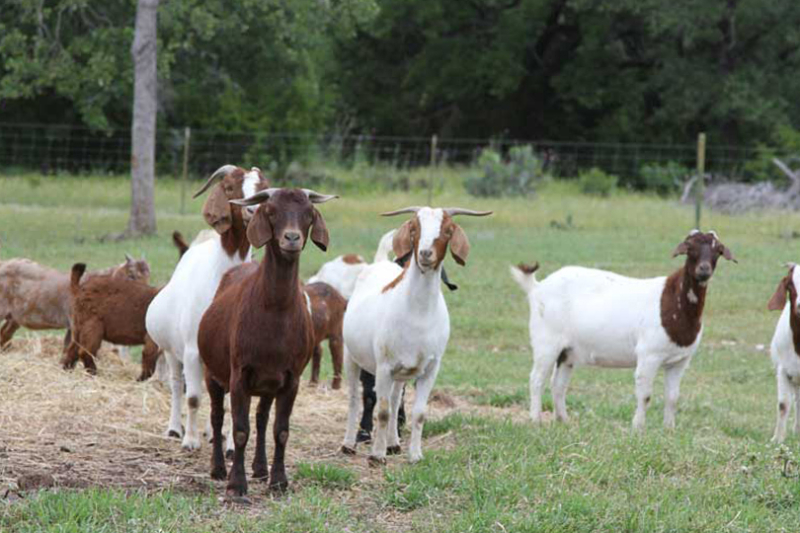Meat goat demand continues to rise, and prices are also increasing.
That’s been a consistent trend for the last decade, and as the U.S. population grows and more people immigrate to the U.S. from countries that regularly consume goat meat, the higher the demand for goat meat, one Texas A&M AgriLife Extension Service expert said.
“Going back about 10 years, we can see average prices have increased from about $2 a pound to an average price now of about $3.50 a pound,” Dr. Jake Thorne, AgriLife Extension sheep and goat specialist, said.
Prices trend higher in late winter and early spring and drop in the middle of summer and early fall, Thorne said.
He noted there are indicators that consumption increases on seasonal trends, but there are no significant numbers that would help producers when marketing their product.
“The premiums that typically come with an increase in demand don’t always come to reality because of the sudden spike in supply,” he said.
Lower prices in the summer are related to the glut of 3-4-month-old goats born in the spring coupled with lower seasonal demand. But producers who raise fall-born goats can capitalize on the anticipated higher prices driven by fewer animals and increased demand in January, February and March.
Thorne said that while on the rise, meat goat market numbers are harder to track compared to other livestock.
“Meat goats do not typically follow the traditional livestock harvest pattern of other livestock. You don’t have large numbers going to a feedlot for several months, harvested at a large-scale commercial facility, and individual cuts distributed to retail grocery stores,” he said. “Some goats are fed and then processed at a heavier weight, but many are not. And it is common for whole carcasses to be sold as opposed to just individual cuts.”
The U.S. Department of Agriculture (USDA) doesn’t track meat goats with the same detail as cattle, hogs or even lambs, making it more difficult to measure herd numbers and economics.
There are four main auctions in Texas for small ruminants like meat goats. Those are in San Angelo, Fredericksburg, Goldthwaite and Hamilton.
“That shows you there is a significant percentage of goats that aren’t being accounted for in the USDA report,” he said. “Texas accounts for 33% of the nation’s meat goat inventory, and those four auctions make up the bulk of Texas sales. So, it gives us a rough idea about total nationwide.”
The average herd size is 20, according to a 2019 goat industry study conducted by USDA.
But total herd numbers have dropped since the coronavirus pandemic. Numbers are down to 790,000, a decrease of 52,000 from 2019.
Although total numbers are down, Thorne noted more landowners are turning to raising goats due to small acreage sizes. They are a more feasible option for a production system of five to 50 acres and are also beneficial in some regions with more brushy plants for browsing rather than grazing forages. They’re also used in targeted grazing approaches where overgrowth is more common.
“They’re an excellent biological tool to graze land that is maybe overgrown or has the potential for wildfire,” Thorne said. “I don’t foresee the demand for goat meat, goat products or goat services doing anything but growing in the next decade.”
Although 90% of the U.S. goat inventory is raised for meat, other uses include milk, hair and livestock shows.


Leave A Comment